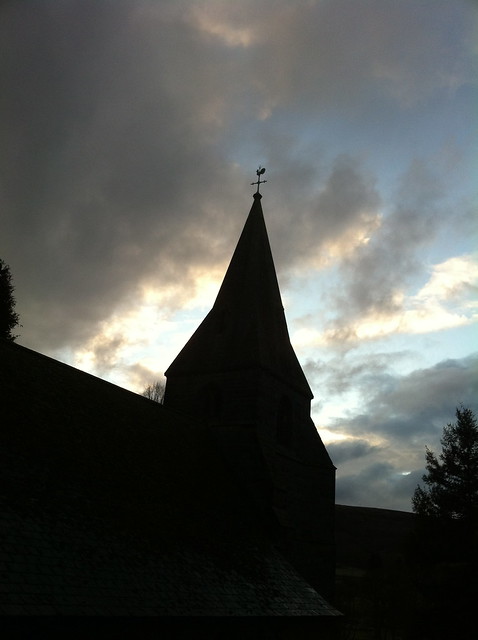A lovely church with a simple but picturesque appearance, set in a broad green valley.
Temple Moore designed the building and its furnishings between 1894 and 1896. Inside it is quietly simple. Moore's creations include the pulpit, the choir seating, the curved benches and the plain panelled wagon roof. The elongated octagonal piers are typical of his work.
Lord Feversham commissioned St John's in the late 19th century to serve the inhabitants of Bilsdale's scattered farms and hamlets. Even when it was built, though, there were hardly enough people in the area to support it. Bilsdale has always been sparsely populated and blissfully detached from the outside world. The road along the dale was only metalled in 1930. St John's has been threatened with closure more than once, but happily has survived.
The church was built by the firm that Temple Moore often used, Brotton and Son, who were on their home soil here. Things didn't get off to a good start. The site was poor, and substantial foundations had to be dug and buttressing added to the tower. Brotton and Son were obliged to fend off a query from a vexed Lord Feversham as the job went over budget.
In a fit of cheerful Victorian nepotism, Moore recommended his brother-in-law, Bernard Wilton, as the incumbent of St John's. Wilton had been a curate at Whitby for five years until 1898. The vicarage at Fangdale Beck was built for him.
It's said that when the builders of St John's met each morning they came to an agreement. “We'll toss a coin, an' if it stays up in t'air, we'll wark. Bud if it cum dahn, we'll gan ti t'Sun Inn for a beer”. The church got built, so we can only assume luck wasn't on their side.
The odd-sounding “Midcable” part of the parish name is a corruption of the Latin media capella, meaning “midway chapel”. It probably refers to the ancient chapel of ease in the adjoining parish of Harome.
The behaviour of the congregation of neighbouring St Hilda's in Chop Gate didn't meet with the approval of Vicar Gray. On Good Friday 1883 he complained: “They seem to have spent the day as one of regular jollification, a fruit banquet, a series of races and a concert”. Obviously Good Friday at St John's was a more sober affair.
